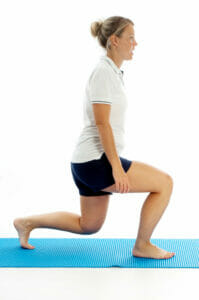Why strength training is important for sailors
With our clinics based on the south coast, we often see patients form the local sailing communities. I was lucky enough to be a Physio at the London 2012 Olympics based at Weymouth and Portland Polyclinic and Sailing Venue, where I was fortunate enough to treat a number of the Olympic sailing teams.
The most common injuries amongst sailors are usually lower back pain, arm and upper body pains/sprains, ankle and knee injuries. These are commonly caused by repetitive activities such as steering, pulling the ropes and sails and winching, all of which use great strength, whether you are a recreational or a competitive sailor.
Strength and conditioning training reduces overuse injuries by 50%!
According to the evidence “Strength training reduced sports injuries by less than a 1/3 and overuse injuries could almost be halved” (Lauersen et al, 2013).
The common areas of weakness we find are; pectorals, lats, biceps (upper body), transverse abdominus (core stability muscles), quadriceps (thigh), hamstrings (back upper leg) and gastrocnemius/soleus (calf muscles).
Strengthening Exercises
Below are some top strengthening exercises we would recommend for sailing and watersports, remember safety first and ALWAYS wear a life jacket.
We recommend doing two-three strength sessions per week and work the muscles to fatigue (until they are aching).
Initially aim to repeat each exercise 25 times with good control and quality.
Once you can complete each exercise 25 times then add weight and reduce repetitions.
Aim to repeat:
- 1-3 sets of 8 to 12 reps (working to fatigue within those reps)
- 2 minutes rest between sets
- Repeat 3 sessions per week on non consecutive days
It is important to add load during strength sessions, because high loads are put through your body when sailing.
Please be aware of your body and take advice from your GP or Physiotherapist before exercising, if you have any aches or pains then please send us an email to enquiries@physio-logical.net for advice and guidance.
Bicep curls
 |
|
Press ups
Bent over rows 1 side at a time
 |
|
Lunges
 |
|
Deep Squats
Planks
Single Leg Bridge
 |
|
Single Leg Calf Raise
 |
|
If you are a sailor, windsurfer or kitesurfer and have aches, pains or niggles or want advice about what you can do to reduce the risk of injury then please get in contact with us, 023 9435 0270 or book your appointment online today.
Please see our exercises on our YouTube channel. Don’t forget to subscribe to get all the latest videos as they’re posted! We have a specific exercise video for neck and shoulder tension in sailors, windsurfers and kite surfers.







